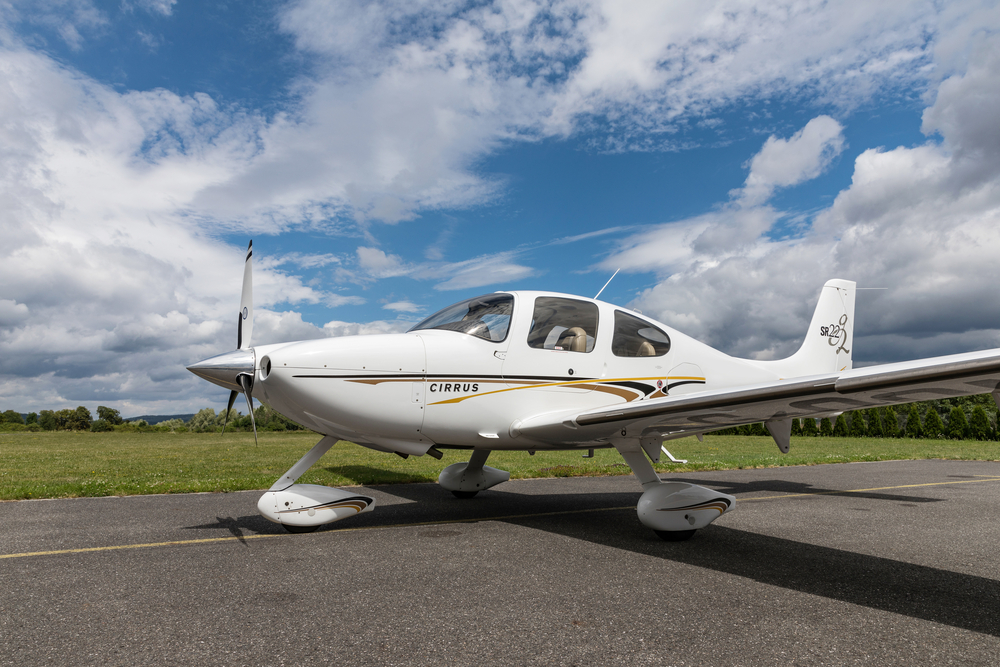US investigators have concluded that wake turbulence caused by an Allegiant Air Airbus A320 landing at Knoxville’s McGhee Tyson Airport (TYS) caused a loss of control and ultimately the fatal crash of a Cirrus SR22 light aircraft carrying two occupants.
In the accident report published by the National Transport Safety Board (NTSB) on February 19, 2024, investigators describe how the Cirrus SR22 (registered N162AM) had taken off from the airport’s runway 23L on December 16, 2021. The low-wing, four-seat aircraft initially flew a left-hand circuit around the airfield and had begun a practice approach to 23L before being instructed by air traffic control to enter a right-hand circuit for the same runway, as jet traffic was approaching the airport for landing.
The Cirrus pilot, in his testimony to the NTSB, stated that he was “learning how to use the aircraft’s head-up display” during the flight.
During the downwind leg of the right-hand circuit, the pilot was advised that an Allegiant Air A320 was on a three-nautical mile final approach to 23L. The Cirrus was subsequently instructed to extend its downwind leg before being told to follow the A320 down the approach. However, the NTSB concluded in its report that despite issuing this instruction, air traffic controllers failed to issue a wake turbulence verbal warning to the Cirrus pilot, which might have warned him to avoid following too closely behind the Airbus.

The report stated that the Cirrus turned onto the base leg for runway 23L approximately 1.8nm behind the Airbus A320. According to the Cirrus pilot, the spacing behind the Airbus “did not feel unusual or too close” compared with his previous experiences with landing behind heavy aircraft at this and other airfields. However, once established on the 23L approach path, the Cirrus pilot said he felt a “bump” from wake turbulence.
Data recovered from the Cirrus’ primary flight display indicated that at around an altitude of 1,000ft, the aircraft began a sharp roll (120 degrees) to the left and the aircraft nose pitched downwards by around 30 degrees.
As he attempted to correct the adverse attitude of the aircraft with control inputs, the pilot requested that his passenger (the only other occupant in the plane) deploy the aircraft’s CAPS emergency response. CAPS, (otherwise, ‘Cirrus Airframe Parachute System’) activates a rocket in the upper fuselage and behind the cabin section that deploys a whole-aircraft parachute, allowing the aircraft to be brought relatively slowly to the ground in an emergency situation.
However, despite testifying that he heard the CAPS rocket go off and felt the initial deceleration from the parachute deploying, the aircraft struck the ground and immediately caught fire. The aircraft’s radar return disappeared from the air traffic controller’s radar screen at a distance of approximately 1.5 miles from the threshold for 23L. The aircraft’s pilot survived the impact with the ground and the post-crash fire, albeit with severe injuries. However, his passenger suffered fatal injuries.
The moments leading up to the Cirrus impacting the ground were captured by a security camera located at a construction site close to the airport. The footage recovered from the camera and analyzed by the NTSB showed the Cirrus descending rapidly, with the CAPS parachute starting to deploy just seconds before the impact.
In its final report, the NTSB concluded that the Cirrus’ flight attitude was upset by the wake vortex created by the Airbus A320 on the approach to runway 23L. The loss of control at 1,000ft above ground level left insufficient time for either the pilot to regain control of the plane or for the CAPS parachute to fully deploy and have any significant decelerating effect on the airframe.
The report also concluded that the failure of air traffic controllers to issue a verbal “caution-wake vortex” warning to the Cirrus pilot contributed to the accident.

